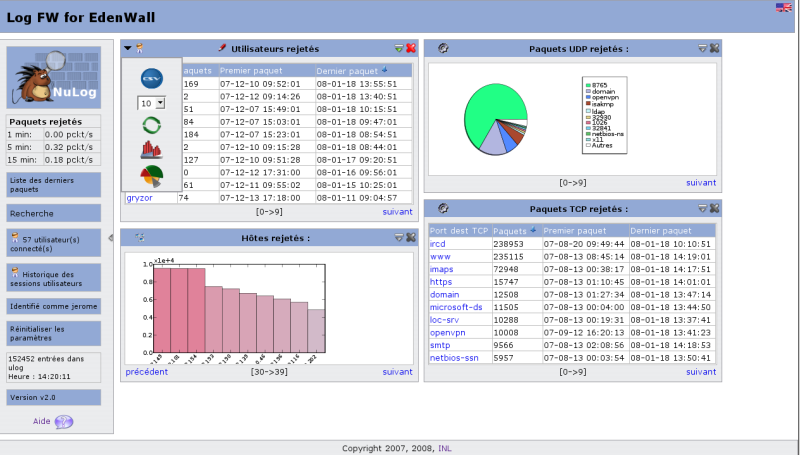Installation
If you’ve followed the previous article, you now have a working ulogd2 installation.We will now explore the way data are stored in the database, and the default SQL schema provided with ulogd2.
SQL schema, basics
The SQL schema ? Not really, only the default one. Ulogd2 uses stored procedures and views to create an abstraction layer between the C code and the real storage of the data (the tables in the SQL database). The basics are the following:
Inserting data using the “INSERT” keyword is fast, but requires the application to know the SQL schema. An update of the SQL part will need an update of the C code, which is not very handy. So instead of using:
INSERT INTO tablename (field1,field2,...) VALUES (1,2,...);
We will create a stored procedure (in this example, we use PostgreSQL PL/pgSQL syntax):
CREATE OR REPLACE FUNCTION INSERT_PACKET_FULL(
IN value11 integer,
...)
RETURNS bigint AS $$
DECLARE
t_id bigint;
DECLARE
t_id := INSERT INTO tablename (field1,field2,...) VALUES ($1,$2,...);
RETURN t_id;
END
$$ LANGUAGE plpgsql SECURITY INVOKER;
Inserting data can now be done, using:
SELECT INSERT_PACKET_FULL(1,2,3,...);
So, we have succeeded into transforming a fast and single (and simple) query into …
read more
